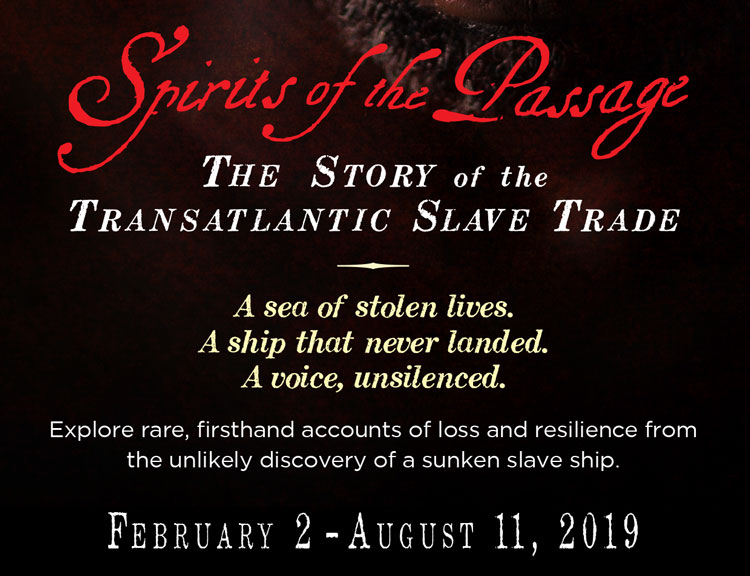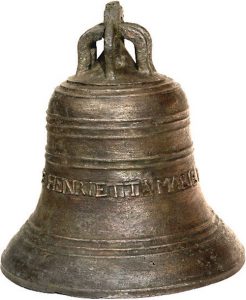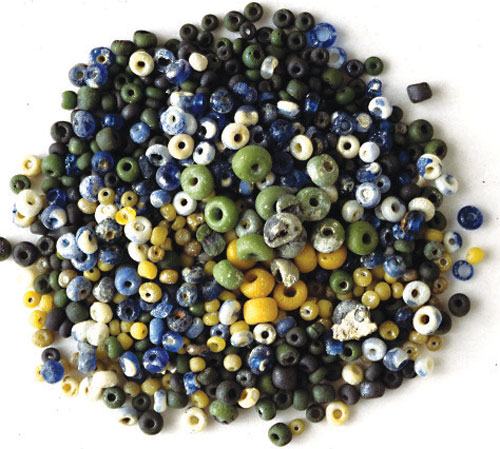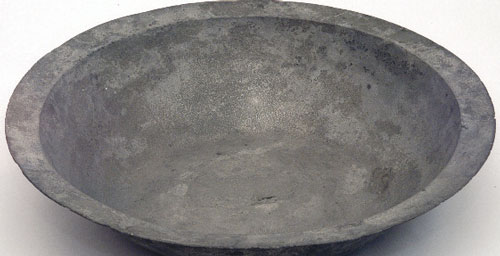By Michael Morris

Artifacts from sunken slave ship
on display at Two Mississippi Museums
A new exhibition at the Museum of Mississippi History and Mississippi Civil Rights Museum showcases rare artifacts uncovered from the wreckage of a sunken slave ship. On Saturday, Feb. 2, Spirits of the Passage: The Story of the Transatlantic Slave Trade — a traveling exhibition of the Mel Fisher Maritime Museum — will open in the FedEx and Medgar and Myrlie Evers Exhibition Halls at the Two Mississippi Museums.
“Spirits of the Passage is an amazing look at the many voices that were never heard during the Middle Passage,” said Mississippi Civil Rights Museum Director Pamela D.C. Junior. “The exhibition will home in on the pain and the people who were taken from their native lands by force. We hope that people will reflect on their own lives and ancestral heritage and honor the great people who through integrity, fortitude and strength brought over … phenomenal attributes that we see in our everyday lives.”
An exhibition that explores the work of master quilter Gwendolyn Magee will accompany Spirits of the Passage. On loan from the Mississippi Museum of Art, The Slave Series: Quilts by Gwendolyn Magee features powerful quilts that were stitched to tell the story of the history of slavery.
“The Mississippi Museum of Art is pleased to be a part of this monumental exhibition at the Two Mississippi Museums,” said Mississippi Museum of Art Director Betsy Bradley. “Embedded in Gwen Magee’s beautiful, sometimes shimmering technique is a haunting emotionality that affects the viewer with empathy and deepened understanding of the traumas of our history. Gwen would be thrilled to have her work shown at these important museums with this groundbreaking exhibition.”
Spirits of the Passage explores the forced migration of millions of Africans through the wreckage of the Henrietta Marie, an English slave ship that capsized off the coast of Florida in 1700. Along with more than 125 rarely seen artifacts from West Africa and the Americas, the exhibition includes a replica of the once-crowded hull of the Henrietta Marie. Spirits of the Passage takes the story of the slave trade through Emancipation and into the modern civil rights movement.
Built in France as a privateer, the Henrietta Marie was captured by England during a military skirmish and repurposed as a merchant slaver. The ship made two voyages across the Atlantic Ocean, first for Barbados where it arrived on July 9, 1698, with 250 Africans aboard. The ship sank heading home from Jamaica in 1700.
The Henrietta Marie was rediscovered by Mel Fisher and his team of divers in 1972. During a series of excavations in the 1980s and 1990s, marine archaeologists found pewter objects, silverware and other personal items. The wreck also contained shackles, beads, tusks and a large bell — evidence of its use as a slave ship. Artifacts found during the excavations are the basis of the Spirits of the Passage exhibit.

Ship’s bell from the Henrietta Marie: Then as now, the ship’s bell announced the time of day. The tolling of the bell would have been a regular, persistent sound throughout the Henrietta Marie’s voyage. To the captives carried on aboard, its sound would have been a constant reminder of the new order of their days—the times they could expect food, or be summoned on deck, or forced back below. It was this bell that revealed the identity of the slave ship Henrietta Marie, when a diver found the bell on the site of the wreck. The shipwreck suddenly had a name and date: “The Henrietta Marie 1699.” That was all that researchers would need
to find the specific history of the long-lost London slaver in the archives of England’s Public Records Office. (Photo: Dylan Kibler)
“We’ve worked with a distinguished group of scholars from across the country to ensure that we’re doing this vast topic justice on not only an academic level, but a human one as well,” said Mel Fisher Maritime Museum President and CEO Melissa Kendrick. “Everyone who visits this exhibition should expect to have a deeply emotional experience. In presenting these authentic objects, we examine the depths of the human spirit.”
Ticket prices for Spirits of the Passage are $10 for adults and $6 for children. Discounts are available for children under 3, students, seniors, active duty and military veterans and groups of 10 or more. Tickets may be purchased for Spirits of the Passage alone or in combination with admission to the Museum of Mississippi History and the Mississippi Civil Rights Museum.
Purchase your tickets at the door or online at TwoMississippiMuseums.com. The Two Mississippi Museums welcome groups of up to 200 people; advance reservations are encouraged. Museum hours are Tuesday through Saturday from 9 a.m. to 5 p.m., and Sunday from 1 to 5 p.m.
The Museum of Mississippi History opened alongside the Mississippi Civil Rights Museum on Dec. 9, 2017, in celebration of the state’s bicentennial. The Museum of Mississippi History explores the entire sweep of the state’s history. The Mississippi Civil Rights Museum explores the period from 1945 to 1976, when Mississippi was ground zero for the civil rights movement nationally.
The Two Mississippi Museums are administered by the Mississippi Department of Archives and History. The museums are located at 222 North St. in Jackson.

Wooden spoon from the slave ship “Brothers,” 1858: The U.S. outlawed the transatlantic slave trade in 1808. Nevertheless, some Americans persisted in plying the trade illegally. From 1819 to 1861, the U.S. During the Middle Passage, Africans were fed soup-like meals of beans, rice or mashed yams, sometimes flavored with pork. Wooden spoons and wooden bowls would have been provided at mealtimes. Slave mutinies were common and the crew took pains to ensure that their prisoners did not have anything that could be used as a weapon—although there are accounts of careless sailors being beaten to death with wooden bowls. (Photo: Corey Malcom)

Trade beads: The tiny, colorful glass beads that were found on the
wreck site of the Henrietta Marie were made in Europe. While readily available to the slave traders, they were rarer than gold in Africa and highly prized.
Crowns and other ceremonial regalia were exquisitely decorated with beads like these. (Photo: Dylan Kibler)

Pewter basin: Durable and versatile, pewter was widely used in England and her colonies from the 16th through the 18th centuries among the lower and middle classes. James Barbot, sailing aboard the Albion Frigate in 1699, found that 13 or 14 basins would buy a man, and 10 or 11 a woman. (Photo: Dylan Kibler)

